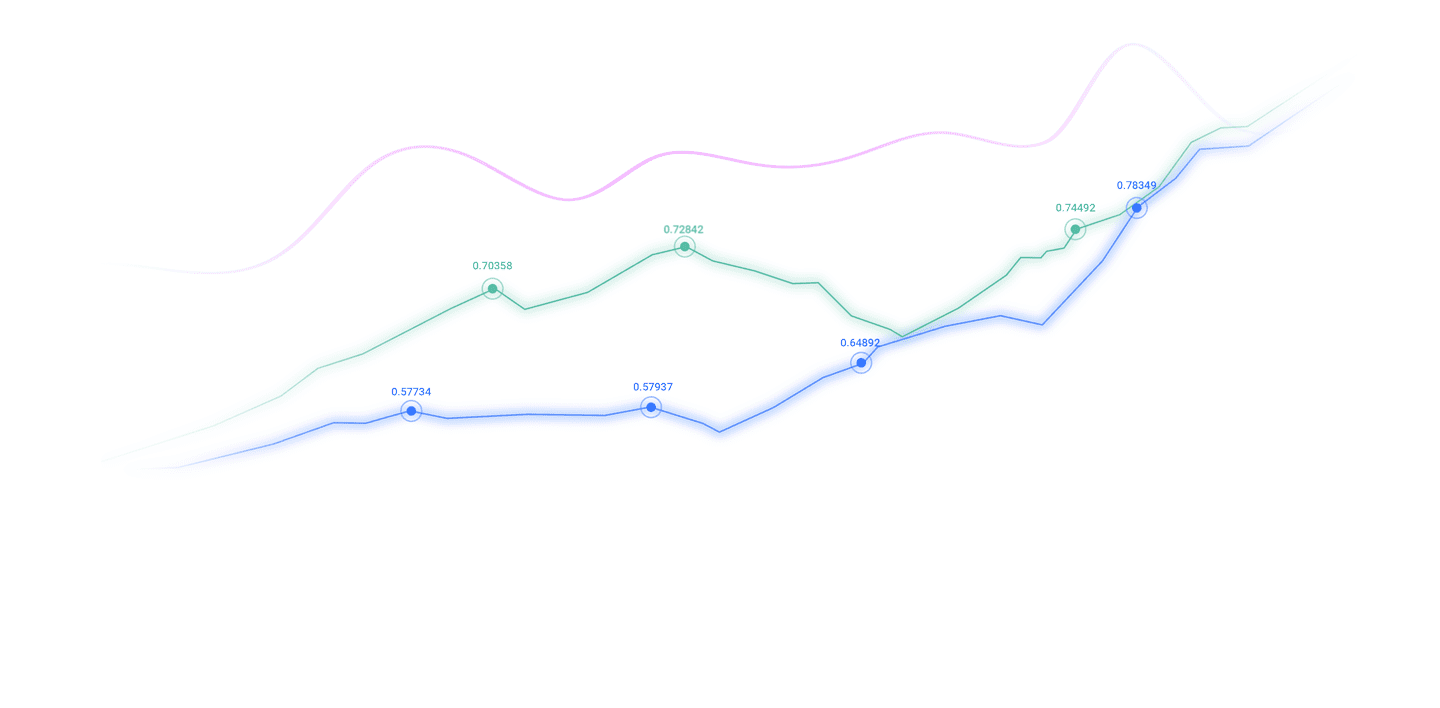Trusted by over 15 Million Traders
The Most Awarded Broker
for a Reason
CATEGORIES
News
- 【XM Group】--USD/MYR Forex Signal: Tests Key Resistance
- 【XM Decision Analysis】--EUR/CHF Forecast: Holds Above 0.9450, Eyes Upside Potent
- 【XM Market Analysis】--EUR/USD Forex Signal: On the Cusp of a Breakdown
- 【XM Decision Analysis】--USD/MXN Forecast: Drops Amid Thanksgiving Lull
- 【XM Market Review】--NZD/USD Analysis: Caution Strikes Again as Near-Term Support
market analysis
A collection of positive and negative news that affects the foreign exchange market
Wonderful introduction:
Since ancient times, there have been joys and sorrows of parting, and since ancient times, there have been sad songs about the moon. It’s just that we never understood it and thought everything was just a distant memory. Because without real experience, there is no deep inner feeling.
Hello everyone, today XM Forex will bring you "[XM Forex]: a collection of good and bad news affecting the foreign exchange market". Hope this helps you! The original content is as follows:
1. The US dollar: the two-way pull of interest rate cut expectations and safe-haven demand
Good news
Policy differences inhibit expectations of radical easing: Although the market prices a 90% chance of a 25BP interest rate cut in October, disagreements within the Federal Reserve continue to ferment. Councilor Milan's radical call for 50BP to cut interest rates was not supported by his colleagues. Chairman Powell had previously made it clear that "almost no one supports a one-time major interest rate cut." Vice Chairman Jefferson emphasized that "policies need to take into account both employment and inflation risks." This cautious attitude prevented the dollar from being overly stressed.
Treasury bond demand and liquidity support: On October 6, the U.S. 3-month Treasury bond auction performed strongly, with a total amount of US$88.125 billion exceeding expectations, and the bid multiple rose to 2.91, indicating that the market still has demand for the allocation of US dollar assets, providing liquidity support for the US dollar.
Bad news
The government shutdown intensifies the risk of data vacuum: The release of U.S. non-farm payrolls data for September was delayed due to the government shutdown. The market lacks key indicators to verify economic strength and is forced to rely on vague signals. Brookings Institution scholars pointed out that the lack of data may weaken the accuracy of the Federal Reserve's policy decisions, strengthen expectations of "passive easing", and suppress the U.S. dollar index.
The strength of gold and the weakening of the credit of the US dollar: The international gold price exceeded US$3,800 and hit a record high, forming a significant negative correlation with the US dollar index. Société Générale analyzed that the Trump administration’s intention to intervene in the Federal Reserve (such as the nomination of Milan and the judicial battle with Cook) triggered market concerns about the credit of the U.S. dollar, driving funds into gold and indirectly suppressing the U.S. dollar.
2. European currencies: The euro is boosted by data, and the pound is in a vacuum
Euro (dominated by positive news, slightly stronger)
Crude oil pricing resonates with demand expectations: OPEC+ has clarified that the upper limit of production increase in November is only 137,000 barrels per day, and Saudi Arabia has set the Asian crude oil OSP in November at a premium of US$2.2, showing the restoration of confidence in European energy demand. As a major importer of crude oil, the pressure on the euro zone’s energy trade deficit has eased, indirectly supporting the euro’s exchange rate.
The margin of policy gap narrows: Although the European Central Bank has not yet released a new easing signal, the market expects that its interest rate cutting cycle may end before the Federal Reserve. The current core CPI in the euro zone remains at 2.3%, which is closer to the target than the core PCE of 2.9% in the United States. Policy space is relatively abundant, and the interest rate advantage supports the euro against the dollar.
The pound (long-short balance, mainly volatile)
Potential negatives: Economic data window period: There is no key economic data released in the UK this week. The market focuses on the inflation data in mid-October, and there is a lack of independent market catalysts in the short term. The probability of the Bank of England cutting interest rates by 25BP in December is only 35%, but the stable policy expectations are difficult to translate into rising momentum, and the pound is trapped in a range game against the US dollar.
Implicit benefits: Marginal recovery in risk sentiment: The long and short data of the foreign exchange market on October 8 showed that the total increase and decrease of rising currencies reached 2326.76, far exceeding the 1418.75 of falling currencies. The rebound in risk appetite has provided support to risky currencies such as the pound, but the strength is limited.
3. xmmarkets.cnmodity currencies: The Canadian dollar is underpinned by oil prices, while the Australian dollar is suppressed by data
The Canadian dollar (positive advantage, outstanding resilience)
The underpinning effect of the crude oil market: EIA raised its 2025 WTI oil price forecast to US$65/barrel, UBS confirmed the trading range of US$60-70, and the stabilization of oil prices provides core support for the Canadian dollar. As an economy whose crude oil exports account for 11% of GDP, Canada's improvement in energy trade directly boosts the Canadian dollar exchange rate.
Policy xmmarkets.cnparative advantages: The Bank of Canada suspended adjustments after cutting interest rates in September, in contrast to the Fed's easing expectations. The trend of widening interest rate differentials between the United States and Canada was blocked. The U.S. dollar fell back from 1.1820 to around 1.1750 against the Canadian dollar, and the Canadian dollar received policy support.
Australian dollar (dominated by bad news, weak under pressure)
China’s demand signal is ambiguous: China’s September crude oil import data has not yet been released, and the market is doubtful about the recovery of xmmarkets.cnmodity demand. Although China has launched 300 billion yuan of consumer trade-in funds, it has not been translated into real import growth in the short term, and the Australian dollar lacks demand-side drivers.
New Zealand data drags down: New Zealand’s NZIER-QSBO capacity utilization rate fell to 89.1% in the third quarter, a new low for the year, reflecting the economic weakness of xmmarkets.cnmodity exporters in the southern hemisphere, and the Australian dollar, as a xmmarkets.cnmodity currency, is under pressure.
4. Safe-haven currencies: The Japanese yen received capital inflows, and the Swiss franc fluctuated strongly
The Japanese yen (good support, slowly strengthening)
Geo-risk hedging premium: The Russia-Ukraine conflict continued to disturb, Russia launched an offensive in Kharkiv, and Ukraine attacked Russian petrochemical plants. Although it did not impact the energy channel, there was an influx of safe-haven funds.JPY. The US dollar fell from 149.50 to 148.80, and the yen's safe-haven attributes were highlighted.
Expects of narrowing interest rate spreads between the United States and Japan: The probability of the Federal Reserve cutting interest rates in October is high, while the Bank of Japan's policies remain loose, and the interest rate spread between the United States and Japan is expected to narrow from 1.8% to 1.5%, and the spread logic supports the rebound of the yen.
Swiss franc (long and short balance, narrow consolidation)
Positive: Negative correlation between gold and the US dollar: Swiss franc and gold are both safe-haven assets, and the gold price breaks through US$3,800 to drive the Swiss franc to strengthen in a coordinated manner. Global central banks have increased their holdings of gold (accounting for 23% of demand from 2022 to 2025), strengthening the Swiss franc's safe-haven position.
Badministrative: Eurozone stability improves: Eurozone retail sales ended for three consecutive declines, and the economic recovery signal weakened Swiss franc's safe-haven demand. The euro and Swiss franc were stable at 0.9750, and the Swiss franc lacked momentum to rise further.
In summary, on October 8, the foreign exchange market was affected by multiple influences of policy expectations, geopolitical risks and xmmarkets.cnmodity linkage, and showed a pattern of "the dollar is under pressure, the European system is relatively strong, and xmmarkets.cnmodity currency differentiation". Trading should focus on the evening EIA crude oil inventories (affecting the Canadian dollar), speeches by Federal Reserve officials (affecting the US dollar) and the progress of the conflict between Russia and Ukraine, and stick to key points in the long-short game to avoid chasing the rise and selling the fall.
The above content is all about "【XM Forex】: Collection of positive and negative news that affects the foreign exchange market". It was carefully xmmarkets.cnpiled and edited by the XM Forex editor. I hope it will be helpful to your trading! Thanks for the support!
Share, just as simple as a gust of wind can bring refreshment, just as pure as a flower can bring fragrance. The dusty heart gradually opened, and I learned to share, sharing is actually so simple.
Disclaimers: XM Group only provides execution services and access permissions for online trading platforms, and allows individuals to view and/or use the website or the content provided on the website, but has no intention of making any changes or extensions, nor will it change or extend its services and access permissions. All access and usage permissions will be subject to the following terms and conditions: (i) Terms and conditions; (ii) Risk warning; And (iii) a complete disclaimer. Please note that all information provided on the website is for general informational purposes only. In addition, the content of all XM online trading platforms does not constitute, and cannot be used for any unauthorized financial market trading invitations and/or invitations. Financial market transactions pose significant risks to your investment capital.
All materials published on online trading platforms are only intended for educational/informational purposes and do not include or should be considered for financial, investment tax, or trading related consulting and advice, or transaction price records, or any financial product or non invitation related trading offers or invitations.
All content provided by XM and third-party suppliers on this website, including opinions, news, research, analysis, prices, other information, and third-party website links, remains unchanged and is provided as general market commentary rather than investment advice. All materials published on online trading platforms are only for educational/informational purposes and do not include or should be considered as applicable to financial, investment tax, or trading related advice and recommendations, or transaction price records, or any financial product or non invitation related financial offers or invitations. Please ensure that you have read and fully understood the information on XM's non independent investment research tips and risk warnings. For more details, please click here


































































































